“Mom, it is like this happens every week.”
“Mommy, we hid in our cubbies today.”
My oldest child, the author of the first quote is astute; my younger child, the author of the latter, more innocent. Both, however, have learned that the world is violent; that their schools might be locations of a mass shooting.
The date: November 7, 2017. Election day. Schools in Onondaga County, New York closed for students, offered professional development to teachers to avoid student exposure to strangers entering their schools as polling places. The day before, the high school where I teach administered the first lockdown drill of the school year. We are now required to have four such rehearsals each school year.
Instructional time forfeited for the illusion of safety.
I recently received Level 1: Active Shooter Training (there are four levels). This article is part analysis, part therapy.
Analysis:
The presentation was well organized and polished. The speakers were articulate and often humorous. I could tell that they believed in their work and in their mission to help empower educators to keep their schools safer.
They were men who had law enforcement and military training. Two of them wore shirts that read: “Know Fear.” They also surveyed the audience of teachers for former military and police in attendance. A suggested round of applause followed.
They did not need to offer evidence of the vulnerability of schools, we all were acutely aware, but the presenters had plenty of statistics. These noted incidents, both old and fresh, reflect a place, time, and level of carnage: Columbine, 1999, 13 dead, Sandy Hook, 2012, 26 dead. The names of these schools synonymous with America’s dirty truth: we are in deep, deep cultural trouble.
Therapy:
I cried so much that my sweater was covered in tears. It was horrible, and it was only Level 1.
My first tears fell when the presenter asked us to recall the worst thing we have personally witnessed. Then, they asked for people to share out! Hearing my colleagues share horrible traffic accidents was gruesome. The recall of trauma literally triggered some of my co-workers. I grew angry. Was this a necessary part of the training? I began to wonder if this instruction, itself, was required.
Were these presenters selling fear?
Does this company profit from our national distress?
Before entering the auditorium, one of my colleagues wondered about the need for the training. This teacher stated that schools are still the safest places. I questioned him, and asked how he knew we would always be safe? I told him that one never knew what might happen. After the training, another teacher stated that it was difficult but necessary. I wondered aloud, saying: “I am not sure it was.”
Will the training change my response in a time of stress and fear? I already have a plan in my head, will I be able to follow that plan? I cannot predict my authentic reaction.
Although the trainers told us that we are the first responders, I don’t want to huddle in the corner with other people’s children. I don’t want to take a bullet for your baby. I will, but I don’t want to — I do not even want to think about it.
Furthermore, the trainers told us not to inform our students the specifics of our training, because we might be empowering a future shooter in our classroom. Trust no one. Protect all.
The enemy is in our midst.
Then, they played the Diane Sawyer interview of the young Sandy Hook teacher who saved her kids by securing them in the bathroom for hours. I cried so hard, snot formed. From that point on, I could not contain my sadness.
Working in a school is weird, the building itself becomes exceptionally familiar. I have misspoken many times and called school the word home. Schools are like homes — the best schools, like homes, are open, nurturing and inclusive. Schools are “safe, gun-free” zones offering students with diverse needs, religions, races, and backgrounds routine and security.
But, schools are no longer sacred places where violence is uncommon. Instead, schools highlight societal ills. America is very sick. We have a disease and fear is helping it spread. With every mass shooting gun purchases increase. With every incident, well-meaning people, like the active shooter trainers, look for solutions. However, I fear that active shooter training for educators is just a band-aid on a gaping, oozing wound.
[bctt tweet=”schools are no longer sacred places where violence is uncommon.” username=”EducatorsRoom”]
Processing active shooter training is tasking. I asked my husband, a concealed-carry permit holder if he was glad that I had this unique professional development. He understood my emotion, but he said, “If you are confronted by a situation, the training might kick in. You have to be unemotional in that regard. There is no place for feelings in a crisis.” I understand my husband’s words. I have always been quite exceptional in a crisis — calm and productive. However, the overwhelming negative emotions after incidents always help me empathize with people suffering post-traumatic stress syndrome.
Overall, I am not sure if I would recommend active shooter training. I feel raw grief. Maybe, at age forty-four, I am mourning the loss of my ability to live in denial.
Ultimately, our students are learning new vocabulary: Silence. Assailant. Lock-down. Active-Shooter — these are the 21st Century terms that students are truly internalizing.
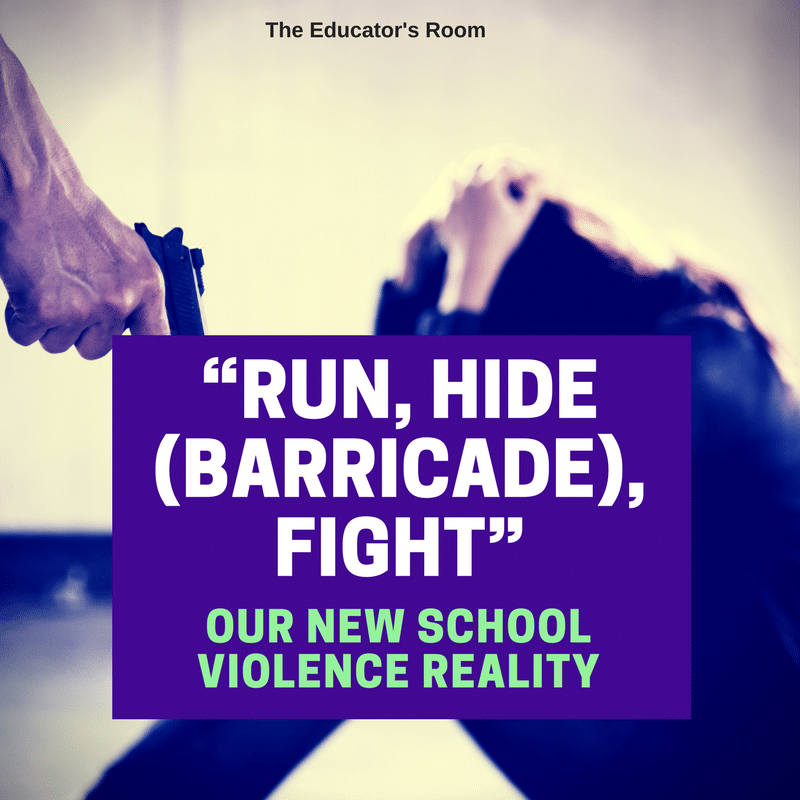

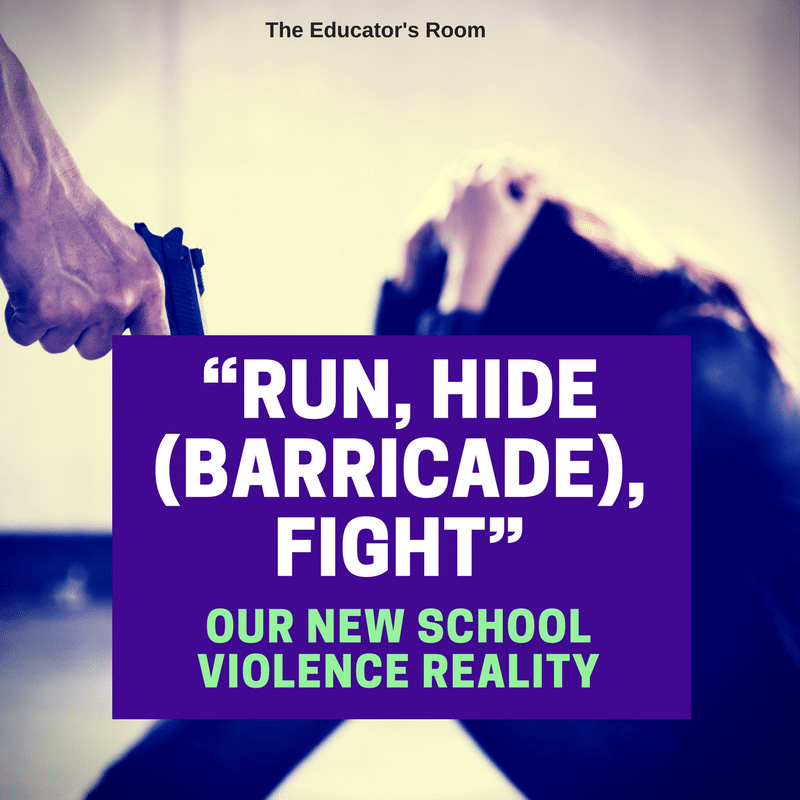

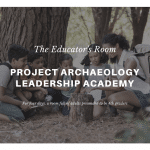
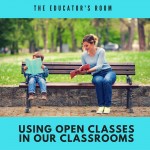

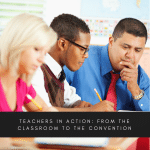
Wow -that training sounds intense. I hate that we as educators have to be put in this position and that our students and our own children are frightened as a result. One of our schools closed the day before Thanksgiving holiday break because a gun threat had been called in. Is this the new normal?